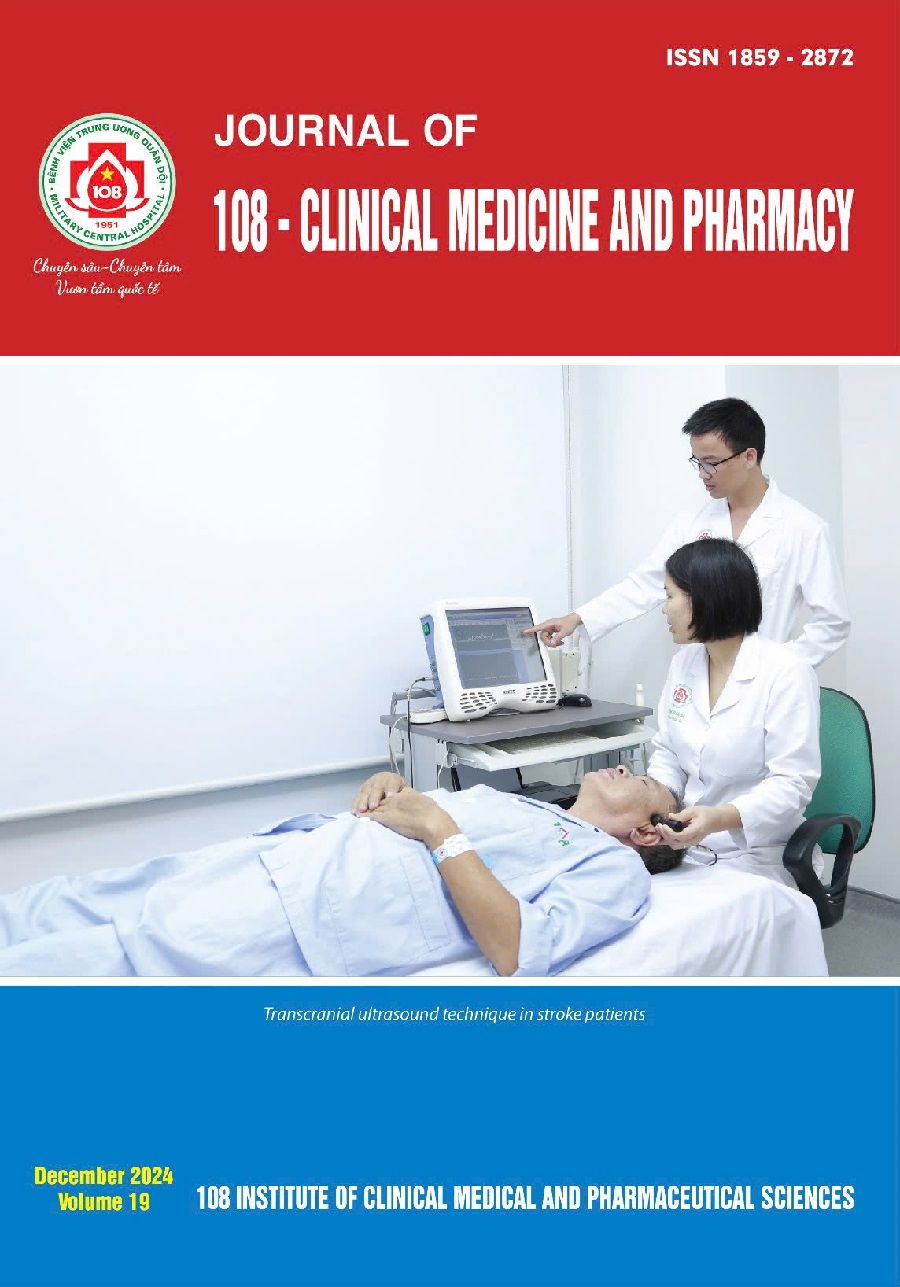Some clinical-pathological characteristics and factors related to muscle-invasion in newly diagnosed bladder cancer
Main Article Content
Keywords
Tóm tắt
Objective: To learn about some clinical and histological characteristics of bladder cancer, as well as investigate about some factors related to muscle-invasion in newly diagnosed bladder cancer. Subject and method: A descriptive retrospective study was conducted on 416 patients with newly diagnosed bladder cancer who underwent transurethral resection of bladder tumor within 6 years from 2018 to 2023 at 108 Military Central Hospital. Result: Mean age was 66.3 ± 12.4 (16-92); male 88.7%, female 11.3%; male/female ratio was 7.8/1. Asymptomatic gross hematuria was the majority (77.9%). Papillary tumors were the majority (62.3%), commonly found in both lateral walls (53.6%), most were ≤ 3cm in size (72.8%), and more than half of the patients had a solitary tumor (54.3%). Most bladder cancers were urothelial carcinomas (99.04%), of which 76.9% were high-grade malignancy; the rate of non-muscle-invasive tumors detected for the first time was 76.9%. The rate of muscle-invasive tumors in both sexes was similar; meanwhile, advanced age, sessile tumor characteristics, tumor size > 3cm, number > 3 tumors, and high-grade malignancy were all statistically significant factors related to muscle-invasive tumors. Conclusion: The detection rate of the first diagnosed non-muscle-invasive bladder cancer was comparable to the world literature; some tumor characteristics were statistically significantly associated with the presence of muscle-invasive tumor.
Article Details
Các tài liệu tham khảo
2. Sung H, Ferlay J, Siegel RL, Laversanne M, Soerjomataram I, Jemal A, Bray F (2021) Global Cancer Statistics 2020: GLOBOCAN Estimates of Incidence and Mortality Worldwide for 36 Cancers in 185 Countries. CA Cancer J Clin 71(3):209-249. doi: 10.3322/caac.21660.
3. Bray F, Ferlay J, Soerjomataram I, Siegel RL, Torre LA, Jemal A (2018) Global cancer statistics 2018: GLOBOCAN estimates of incidence and mortality worldwide for 36 cancers in 185 countries. CA Cancer J Clin 68(6):394-424. doi: 10.3322/caac.21492. Epub 2018 Sep 12. Erratum in: CA Cancer J Clin 70(4):313. doi: 10.3322/caac.21609.
4. Dyussenbayev A (2017) Age periods of human life. Advances in Social Sciences Research Journal 4(6): 258-263.
5. Sasikumar S, Wijayarathna KS, Karunaratne KA, Gobi U, Pathmeswaran A, Abeygunasekera AM (2016) Pathological Characteristics of Primary Bladder Carcinoma Treated at a Tertiary Care Hospital and Changing Demographics of Bladder Cancer in Sri Lanka. Adv Urol 2016:5751647. doi: 10.1155/2016/5751647.
6. Mao NV (2017) Some general characteristics of patients with the bladder cancer, histopathology and the relation with the stage. Journal of Medicine and Pharmacy 7(3): 22-28.
7. An NM, Kien NT (2022) Histological characteristics and disease stages of patients with bladder cancer undergone treatment at Xanh Pon hospital. Vietnam Medical Journal 521(1): 110-114.
8. Shephard EA, Stapley S, Neal RD, Rose P, Walter FM, Hamilton WT (2012) Clinical features of bladder cancer in primary care. Br J Gen Pract 62(602): 598-604. doi:10.3399/bjgp12X654560.
9. Khadra MH, Pickard RS, Charlton M, Powell PH, Neal DE (2000) A prospective analysis of 1,930 patients with hematuria to evaluate current diagnostic practice. J Urol 163(2): 524-527.
 ISSN: 1859 - 2872
ISSN: 1859 - 2872
